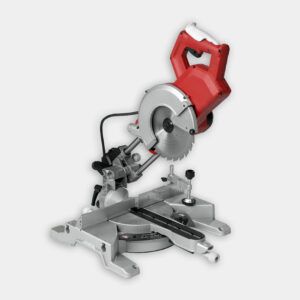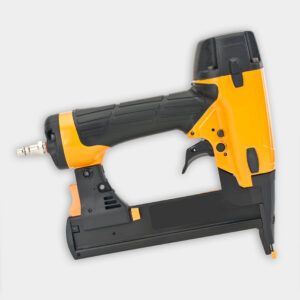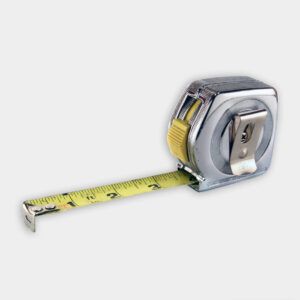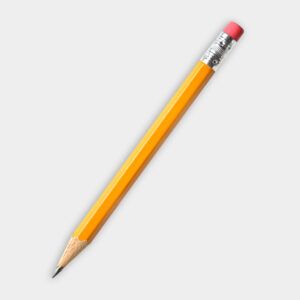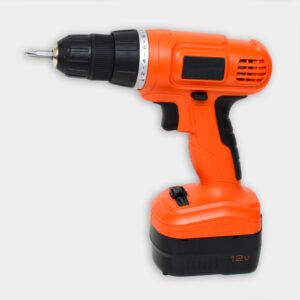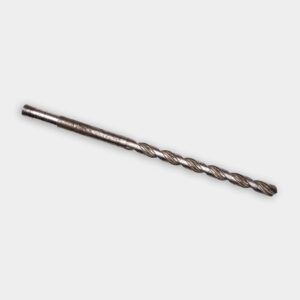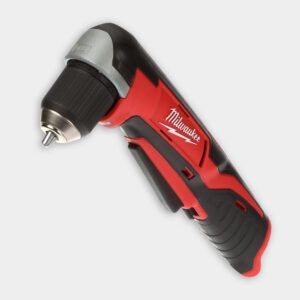We may be compensated if you purchase through links on our website. Our team is committed to delivering honest, objective, and independent reviews on home products and services.
Project details
Skill
Cost
Estimated Time
Installing cabinet hardware is a great way to upgrade the look of your kitchen without breaking the bank. This simple do-it-yourself (DIY) project can transform builder-grade cabinets into custom-looking pieces that reflect your style. Carpenter Nathan Gilbert helps a homeowner install new kitchen cabinet hardware in the video above, and we’ll walk you through the process from start to finish in our guide.
Choosing the Right Hardware
Selecting the right hardware is the best way to achieve your desired look and has the most impact on the cost of the installation. Angi estimates that installing new kitchen cabinet hardware costs an average of $300. Consider the following factors when making your choice:
- Style: Choose hardware that complements your kitchen’s overall design aesthetic. Sleek, modern handles can enhance a contemporary kitchen, while ornate knobs might be better suited for a traditional or rustic space.
- Finish: Select a finish that coordinates with other elements in your kitchen, such as appliances or light fixtures. A matching or contrasting finish can help create a cohesive look or add visual interest, depending on your design goals.
- Size: Make sure the hardware is proportionate to your cabinet doors and drawers. Oversized handles on small drawers can look out of place, while too-small knobs on large cabinets may be impractical and visually unbalanced.
For this project, the homeowner selected matte black drawer pulls in two sizes for a cohesive look throughout the kitchen.
Tools and Materials Needed
Before you begin, gather the following tools and materials:
- Hardware jig
- Drill and drill bits
- Screwdriver
- Tape measure
- Pencil
- Cabinet hardware (knobs or pulls)
- Mounting screws (typically included with hardware)
- Wood glue (for custom jig, if needed)
- Scrap wood (for custom jig, if needed)
Preparing for Cabinet Hardware Installation
Proper preparation is key to achieving a professional-looking result. Follow these steps to get started:
Before getting started, clean the cabinet surfaces and decide on the placement of your hardware. Typically, door hardware is installed on the stile opposite the hinges, while drawer hardware is centered. A stile is a vertical piece of wood used in the cabinet frame.
Next, choose a jig that suits your needs. A jig is a cabinet-making tool that can guide your cutting tool or work as a template for repetitive tasks. Options range from high-end professional jigs to DIY versions made from scrap wood.
Selecting and Using Hardware Jigs
Gilbert demonstrates three jig options in the video, ranging from a high-end $200 model to a simple DIY version made from scrap wood.
- High-end professional jigs: High-end jigs offer precise control and adjustability for various hardware sizes and positions. While they can be expensive, they are good for frequent use and are a favorite of cabinet installers and millwork companies.
- Mid-range jigs: A middle-tier option costs about $20 and strikes a balance between affordability and functionality. These jigs are well-suited for DIY enthusiasts.
- DIY jigs: A DIY jig made from scrap wood can be equally effective for occasional use. Gilbert shows how to create a simple jig using 1-by-pine, a cleat, and precise measurements. This cost-effective method allows for reliable placement without the investment in professional tools.
Installing Hardware on Cabinet Doors
Follow these steps to install your chosen hardware on your cabinet doors:
- Locate the intersection of the rail and stile on the cabinet door.
- Measure the width of the stile and mark its center point.
- Use a jig to ensure consistent placement across all doors.
- Drill pilot holes through the cabinet door at the marked locations.
- Insert the mounting screws from the inside of the door and attach the hardware.
Different hardware sizes may require slight adjustments, especially when switching from standard to larger or smaller pulls. Always recheck your measurements when switching hardware sizes. For larger cabinet doors, adjust your jig or measurements to accommodate longer pulls.
Installing Hardware on Drawer Fronts
Installing hardware on drawer fronts requires a slightly different approach. Here are the steps to take:
- Measure and mark the center point of each drawer front.
- Use an adjustable jig to ensure consistent placement across all drawers.
- Set the jig to the correct spacing for your hardware.
- Align the jig with the center mark and drill pilot holes.
- Use longer screws to account for the thickness of both the drawer front and drawer box.
- Attach the hardware from the inside of the drawer.
Gilbert recommends using a jig with a peephole for precise alignment on drawer fronts.
Dealing With False Drawer Fronts
Some kitchens have false drawer fronts, typically found under the sink. While these are usually left without hardware, adding pulls can offer a more consistent look. Measure and mark the false drawer front as you would a regular drawer. Confirm there’s enough space behind the front to accommodate the screw length. Install the hardware using the same technique as for functional drawers.
Tips for a Professional Finish
Double-check measurements and markings before drilling. Before finalizing all installations, test fit one set of hardware on both doors and drawers. This step confirms that all your measurements are accurate and the hardware aligns perfectly. Make any necessary adjustments before proceeding with the full installation.
Use a drill stop or piece of tape on your drill bit to prevent drilling too deep. Consider a right-angle drill attachment for easier access in tight spaces.
Installing new cabinet hardware is an affordable way to change the look of your kitchen. With the right tools, careful measurements, and some patience, you can achieve beautiful results.
